Our last foal
Forums
Re: Our last foal
Description of the German Ridingpony GRP
The breeding of the German Riding Pony began around 1965, by crossbreeding various English pony breeds, especially Welsh, on Arabians, Anglo-Arabians, Thoroughbreds, few Trakhenes and some Warmbloods. The goal was to breed competition-quality ponies for children to to ride in sport horse competitions, more easily controllable by children than the typical large Warmblood horses used by adults, while also keeping some Pony characteristics, including character, type and willingness to perform.
Initially, Thoroughbred and Arabian stallions were crossed on pony-sized Fjords and Haflingers. These cross-breeding attempts to produce a sport pony in one generation did not lead to the desired type. After British pony breeds, primarily Welsh ponies were imported and added to the bloodline, by 1975 a distinct German riding pony type developed. In the 1990's attempts were made to further improve the breed through the infusion of Trakhenes, Hannoveranian and Holsteiner blood, but this infusion of horse blood was unsuccessful: the pony type and qualities were often lost. Today's German Riding Pony breeders use specific bloodlines to reliably create German Riding Ponies that fulfill the goal of a pony type who competes with the athleticism of a small warmbood.
Today, the German Riding Pony breed has distinct bloodlines, and all ponies that will be used as breeding stock must pass rigorous inspections. Some infusion of Welsh pony and Arabian blood is still used.
More than most pony breeds, the German Riding Pony has a phenotype very similar to that of a full-sized horse. Only the head is pony-like, giving the appearance of having a pleasant manner and friendly disposition. The German Riding Pony ideally is between 138 cm and 148 cm or approximately 13.2 hands to 14.2 hands, though in some European competition, ponies up to 151 cm are allowed, and these taller animals can compete against full-sized horses at CDI FEI-sanctioned competition.
The German Riding Pony is bred to be handled by children and adolescents. It is suited for both dressage and jumping, with a way of going that is smooth and very horse-like.
Pony sport horse competitions or "tournaments" are popular in continental Europe, and ponies are shown by children and adolescents up to 16 years of age in the disciplines of dressage, show jumping, and eventing. Major tournaments for pony riders include the German Youth Championships, the European Championships and the "Preis der Besten," a team competition, which will be in dressage, with the International Dressage tests of the FEI ridden, for preparatory examination, team and individual scoring. This competition is very popular and both contestants and coaches vie for spots on the respective participating teams.
The German Riding Pony breed is relatively new to the United States, with a few imports and a single breed registry authorized to conduct inspections for breeding stock.
Breed Standard
The breed standard for the German Riding Pony is for a pony preferably between 138 cm and 148 cm or approximately 13.2 hands to 14.2 hands. The athletic and refined qualities of a riding horse which exhibits the pony type is essential. The type includes a small head, large and lively eyes with little ears, a clean throatlatch, a long, well-set neck, pronounced withers and long croup. Movement should be correct, rhythmic, spacious and elastic with distinct impulsion from the hindquarters. The pony's disposition should be unpretentious and benign, with a willingness to perform, showing courage and evenness of temperament.
Small German Riding Ponys have the same Breed Standards then GRP´s, but more pony type and a size between 120 and 137 cm. It is used for driving or as a performance starter for small children. Stallions are often used to size the progeny of overgrown mares down.
Re: Our last foal
Thanks! Very cool a mini warmblood. I like that they have use Welsh an Arab, those are the 2 breeds a I had for my children growing up. 13.2 - 14.2 is a great size even for me :smile: I'm 5'2" so I love that size actually. The Arab that my children had was a little 13.2h Raffles bred mare she was so sweet.
Re: Our last foal
Last weekend i took new pics of our boy - he manages fine.
[img]http://whynot-ponys.de/images_big/WhyNo…] [img]http://whynot-ponys.de/images_big/WhyNo…]
[img]http://whynot-ponys.de/images_big/WhyNo…]
Re: Our last foal
The skin of some foals split at the legs because of their rapid growth rate -- he was already born with such splits on both hind legs. In addition to this split he has sensitive skin (he rubs his hair out very easily - like his mom). We treat it with Aloe Vera Vetinary - it looks much better now and the hair starts growing back already.
I did a clip of him - youtube compresses them a bit horizontally, but you can get a little idea of his movements:
http://www.youtube.com/watch?v=PEFmkY1D…" onclick="window.open(this.href);return false;
Re: Our last foal
I've never seen one that big, but I've always noticed that they all (that I've seen) get them. I never knew that was why though - I was told (and thought it an old tale) that it was where mares marked them as theirs - but that did not make sense! I was under the impression that it's just where they scrape themselves getting up over and over.
Re: Our last foal
The area wouldn´t be that big if our boy wouldn´t have scraped himself at going up - but they are significantly bigger than with the growing gaps of our two girls. For example WhyNot Sierra - only a slight gap already healed [img]http://whynot-ponys.de/images_big/whyno…]
If you look at the first pics of him in this thread you´ll see he already has the gap -- the pics where taken with him about 10 hours old.
Re: Our last foal
It´s easy to overlook - especially if it is not as distinctive as with our young man - either has not every foal this gap open. But Prosecco has heavy joints (and a big breast -- man I´m looking forward to the development of this boy) and I think that´s the reason. His last year brother had them, too, but not in this extreme. He´s just something special :smile:
Re: Our last foal
Like this?
That´s WhyNot Sierra - 2 months old when I took the pic.
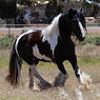

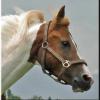

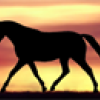
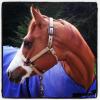

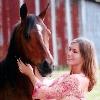
Re: Our last foal
Very nice, congratulations!!!